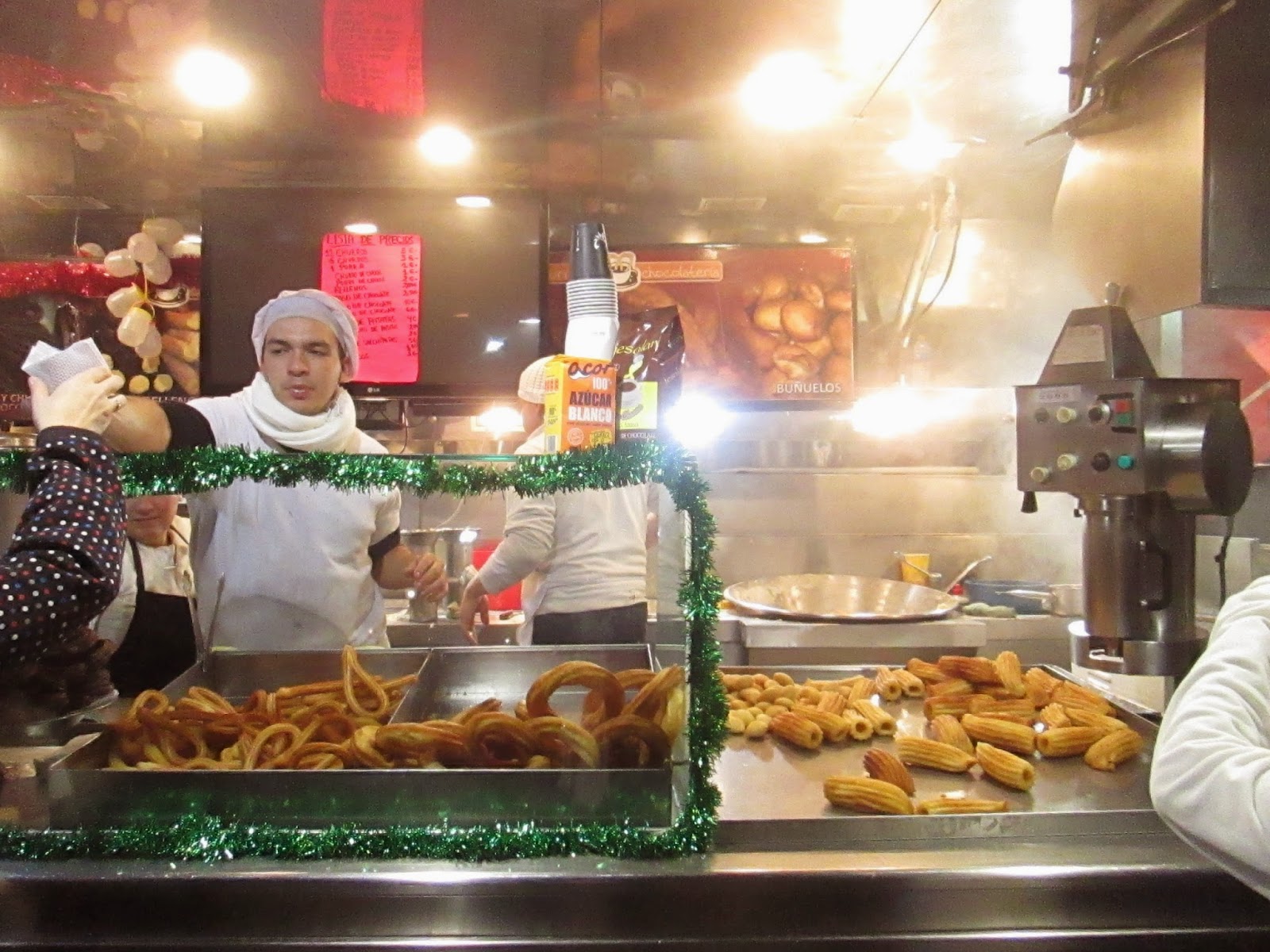It's been a jam-packed couple of weeks, what with Christmas and New Year's, and I have more photos than I know what to do with. So I'll just jump right in with Christmas, which here in Spain manifests itself in three days of feasting and late-late-night jamborees with friends and family: the first comes Nochebuena, or Christmas Eve, then New Year's Eve, and finally Día de los Reyes Magos, which takes place on January 5th, the night before Epiphany in the Christian calendar. While each one of these holidays has its own special quirks and traditions, the one thing they all have in common is they are filled with mountains and mountains of strange and delicious food. (Yes, that is a disembodied pig's leg below, trotter and all.)
Otherwise, it's been a busy, hectic Christmas season, culminating in me packing up and taking an epic train ride across Spain - the northwestern outskirts of Madrid are pretty stunning, and I passed by the famous monastery Escorial, which I am determined to go back and visit in the spring. Now I am in the rainy coastal city of Vigo, in which Lisa's and my dreams of being roommates again have at long last come to fruition. We are both thrilled to be together again, and all is right with the world!
First of all, I'll start of with the iconic jamón serrano, which is a dry-cured ham that takes 18 months hanging in abandoned sheds high up in the lonely sierra (that how I picture it anyway) before it's properly prepared, and then it's carved up in thin slices and eaten for Christmas dinner. While it's salty and oily and delicious and every Spanish person I've talked to just raves about it, I still prefer chorizo.
While I was stuffed to the brim over the course of Nochebuena and New Year's Eve with all sorts of delectable dishes I'd never tried before - Russian potato salad with homemade mayonnaise, crab sticks, pan-fried shrimp with the heads still attached, stuffed mussels and scallops still in the shell, triangles of Manchego cheese, and anchovies of all kinds - if I were to name my absolute favorite, it would have to be boquerones, which are anchovies seeped in vinegar and served with teeny-tiny pickled onions.
Cava, a sparkling white wine, is the libation of choice. And when it comes to desserts, you wouldn't even believe the variety they have. All sorts of pastries and cakes and chocolates and marzipan.... my favorite, so I don't have to go into all of them, is a toss-up between chocolate and churros (which is technically a breakfast, but ya know...) and turrón
de yema which is a soft, golden-brown candy made from sugar, crushed almonds, egg yolks, and joy. It tastes like a birthday cake, only a hundred times stronger, and you can just take a tiny little bite and your whole mouth is flooded with almondy sweetness - it's sheer genius.
On New Year's Eve, there are three key superstitions you have to observe for good luck in the upcoming year: you need to wear something red, something made of gold, and eat twelve grapes before last stroke of midnight. And on Día de los Reyes Magos, which commemorates the day the Three Kings came to visit the Infant Jesus with their gifts of gold, frankincense, and myrrh (see, I went to Sunday school as a kid), it is imperative that you attend the cabalgata, a parade of Mardi Gras proportions with the Reyes Magos as the grand finale. (Incidentally, while I believe Papa Noel has started to become a Christmas trend as American customs slowly infiltrate Spanish culture, it is the Reyes Magos who give good children the bulk of their Christmas presents on the night of the 5th of January.)
Unfortunately, I didn't get into town to see the cabalgata, but I had a good excuse: I went on a walking tour of Alcalá de Henares, which involved a lot of culture, a lot of architecture, and a lot of chatting over cañas and tapas. It put a lot of the buildings of the city into context, especially the grand, old university building, the facade of which is a mixture of Gothic and Classical architecture, with statues of Christian and Ancient Greek mythological figures: St. Matthew and St. Paul were engraved right below Perseus and Andromeda, overseen by a battalion of gargoyles.
So we took a tour of the historical center, which our tour guide described as having once been the center of a bitter political feud between the university and the municipality. We visited an old convent, which was also a refuge for repentant prostitutes, the cathedral, and the Archbishop's palace where Catherine of Aragon - first wife of Henry VIII - was born, and also the house where Miguel de Cervantes was born. We perused the remnants of the Christmas market, watched some churros being fried at the pop-up churrería, and then retired to a cafe for coffee and chocolate cake.





















































